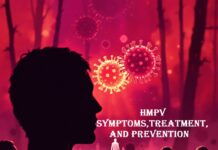Recently in China, a new form of Coronavirus has identified by the World Health Organization. A Coronavirus is a common form of the virus that causes an infection in your respiratory organs such as the throat, lungs, and nose. CoWIN app.
Most of these viruses are not dangerous, but the freshly evolved new form 2024 novel Coronavirus or 2019-nCov has claimed about 17 lives in China. The first form found in Saudi Arabia. In 2012, people died while suffering from Middle East Respiratory Syndrome (MERS).
The deadly virus first originated in Saudi Arabia, and then it mitigated to other Middle Eastern Nations than to Africa, Asia and then to Europe. Two cases of people suffering from MERS in America reported in 2014. These two patients had just returned to America from Saudi Arabia before the disease.
Then, in 2015 the MERS from the Coronavirus virus splurged in Korea which also recorded the most significant number of patients suffering from MERS outside the Arabain region. At first, in 2003, the number of deaths from SARS raised to 774.
Until 2015, only two forms are there, namely SARS and MERS, known. But on December 31, 2019, WHO reported the case of a person suffering from a new way of Coronavirus. Then later in the second week of January, the numbers rose in China. The first case reported in Wuhan of China.
It is said to be the epicentre of the epidemic disease. Now patients are suffering from a new form of a virus. So we don’t know how it will affect the people. And without knowing this, there can’t be any medicine or treatment for the sufferers. As of now, there is no Coronavirus treatment for the epidemic disease.
Apart from China, Thailand has reported about 14 cases of the epidemic disease while Germany confirmed the first case in its region. Other nations like Sri Lanka and cities like the Philippines have stopped issuing visas to visitors from China.
Coronavirus is a class of virus that causes diseases in animals and humans. In humans, it causes mild respiratory symptoms or in rare cases, causes fatal respiratory problems. In animals like cows and pigs, it causes diarrhoea. As of now, there is no proven coronavirus treatment to cure the diseases originating from the virus.
It targets the RNA genome. It has a definite sense of single-stranded RNA. A virus is categorised as positive or negative depending upon its behaviour towards the single-stranded RNA genome. The virus cell affecting the single-stranded RNA also works as a messenger, and it can convert itself into a protein.
Coronavirus has three forms, as discussed below:
- SARS – SARS is an abbreviation for Severe Acute Respiratory Syndrome. The outbreak of this virus was in 2003. Primarily it hit Asia and then the rest of the world. In its press release, the WHO confirmed that a novel Coronavirus was responsible for infection of SARS. The virus affected 8000 people out of which about 800 died.
- MERS – In September 2012, the virus initially known as Novel Coronavirus 2012. Now it is known as Middle East Respiratory Syndrome virus. The WHO updated people that the virus did not transmit from one person to another, but later cases in which transmission occurred from one human to another were reported. Initially, the Arab region was affected by the said virus. Then the virus travelled to the nations other than the Arab Peninsular region.
- 2019 n-Cov: This is the newest form of Coronavirus recorded. The news about its occurrence came on 31 December 2019. Later in January the virus gradually evolved and spread in many regions. The epicentre of the new Coronavirus is the Wuhan province of China.
Recently the new form of Coronavirus 2024 n-Cov has been reported from Wuhan. It originated from market trading illegal wildlife. Concerned Chinese authorities and WHO are looking for the root cause of the newly infecting virus which has infected hundreds of people.
In most of the cases of the common cold in humans, these is the face behind it. They infect the human body at a significant rate. It causes cold with major Coronavirus symptoms like:
- Fever – Fever can be of high degree or of a low degree, depending upon how deep is the infection.
- Throat – People have reported some throat problems along with some respiratory issues when inflected with the Coronavirus
- Swollen adenoids– People have reported swollen adenoids or the topmost part of the tonsils.
Apart from colds, Coronaviruses are capable of causing pneumonia. When the virus infection gets into your windpipe and your lungs, it causes pneumonia. Now they can cause either direct viral pneumonia secondary pneumonia. It can also cause bronchitis.
Most Coronaviruses transmit from one to another like the rest of the cold-causing viruses that is by sneezing or coughing. As no proven treatment available for the Coronavirus disease, if you see any of the symptoms, please check with your doctor as soon as possible.
The symptoms of common Coronaviruses include:
- Coughing
- Runny nose
- Throat problems
- Headache
- Fever
- The feeling of being unwell
The Coronavirus Symptoms currently prominent in China and other parts of the world include:
- A constant feeling of being tired.
- Difficulty in breathing.
- Pneumonia
- High temperature
Diagnose the above-listed coronavirus symptoms if you have been to any place where the virus is prominent. Apart from this, you can follow the given guidelines by WHO to protect yourself from the infection:
- You must wash your hands more often than before. While you are purchasing a handwash, check and buy the one that has an alcohol base, or soap as the base.
- If you know someone who is suffering from fever or cold, then avoid any physical contact with them.
- If you are suffering from cold, be sure to protect your mouth before you sneeze or cough.
- You must avoid eating raw animal products. Ingredients such as raw milk, raw meat or natural animal organs shall handle with due care. It may cause contamination.
Even though you do not belong to any infected region, you must follow the above guidelines and consult the doctor if you experience any Coronavirus symptoms. For any updates, check Timesalert.
Contents





